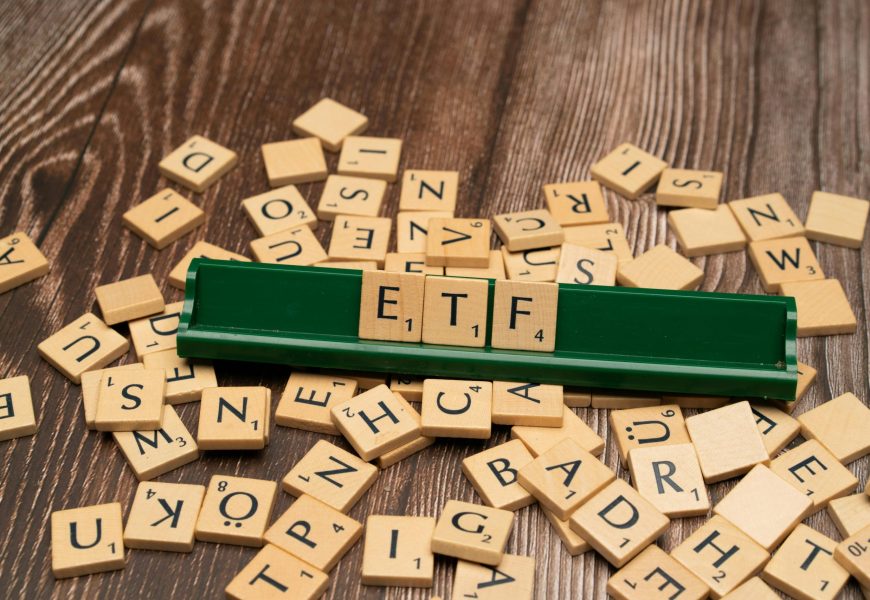INVESTMENT
Index Funds vs. ETFs: What’s Better for First-Time Investors?
For young adults stepping into the world of personal finance, one of the first questions they face is where to begin investing. Among the most common entry points are index funds and exchange-traded funds (ETFs)—two popular vehicles for gaining broad market exposure without having to pick individual stocks. While they share many similarities, key differences in cost structure, trading flexibility, and accessibility can influence which is more suitable for first-time investors.
June 1, 2025
What Are Index Funds and ETFs?
At their core, both index funds and ETFs are passive investment vehicles designed to track the performance of a specific market index, such as the ASX 200, S&P 500, or MSCI World Index. Instead of trying to beat the market by selecting individual winners, these funds aim to match the market’s performance, offering diversified exposure with lower fees than actively managed funds.
An index fund is a type of mutual fund that mirrors a specific index. Investors buy and sell units through the fund provider at a price based on the net asset value (NAV), calculated once daily after markets close.
An ETF, on the other hand, is also index-tracking but trades on stock exchanges like individual shares. This means ETFs can be bought or sold at market prices throughout the trading day.
Key Similarities
Diversification: Both offer exposure to a wide range of companies across sectors and geographies, reducing single-stock risk.
Low Fees: Because they track indexes passively, management fees (MERs) are typically much lower than those of active funds.
Compounding Benefits: Reinvesting dividends and gains can significantly grow wealth over time.
Key Differences
1. Trading and Liquidity
The most immediate difference is how you buy them.
ETFs are traded on the open market via a brokerage platform (e.g. SelfWealth, CommSec), and prices fluctuate throughout the day, just like individual stocks.
Index funds are purchased directly from the fund issuer (e.g. Vanguard, AustralianSuper), and are only priced once daily.
For young investors who prefer a “set-and-forget” approach, this might not matter. But for those who want intra-day flexibility or the ability to place limit orders, ETFs provide more control.
2. Minimum Investment Requirements
Most ETFs can be purchased with as little as $100–$500, depending on the platform and stock price. This makes them particularly attractive for beginners who want to start small.
In contrast, many traditional index funds in Australia have minimum investment thresholds—often $3,000 or more. While some providers now offer lower-cost managed accounts or platforms like Vanguard Personal Investor with reduced entry barriers, ETFs still tend to win in accessibility.
3. Fees and Costs
Management fees for both are usually below 0.30%, but ETFs often have slightly lower MERs due to the absence of direct administration by the issuer. However, ETF investors also pay brokerage fees (usually $5–$20 per trade) and may face bid-ask spreads that can slightly eat into returns.
Index funds, while generally free from brokerage fees, may charge buy/sell spreads or entry/exit fees, depending on the provider.
4. Dividend Reinvestment
Index funds usually allow automatic dividend reinvestment (DRP), a great feature for compounding returns.
ETFs may offer this too, but it often depends on the broker or requires manual reinvestment.
For young investors aiming to build wealth passively over time, a seamless DRP can make a meaningful difference.
Which Is Better for First-Time Investors?
There’s no universally “better” option—it depends on your preferences, platform, and goals.
ETFs may be better if you:
Are comfortable using a brokerage account
Want lower minimum investments
Value flexibility in trading
Are happy to monitor prices and pay brokerage
Index funds may suit you if you:
Prefer automatic, hands-off investing
Want built-in dividend reinvestment
Don’t want to worry about placing trades or watching markets
Are starting with a larger initial investment
For example, a 22-year-old graduate looking to invest $100 monthly into a broad global portfolio might find ETFs on Raiz or Pearler Micro more accessible. Meanwhile, someone with $5,000 saved and a long-term mindset might choose Vanguard’s diversified index funds, reinvesting dividends over decades.
Final Thoughts
Both index funds and ETFs provide a smart foundation for building long-term wealth, especially for young investors focused on low-cost diversification. The best choice often comes down to how hands-on you want to be and how much you’re starting with.
The good news? You can always mix both—holding ETFs in a brokerage account for flexibility, while setting up recurring contributions to an index fund for automation. The key is to start early, stay consistent, and keep costs low—because in investing, time in the market truly beats timing the market.
Diversification: Both offer exposure to a wide range of companies across sectors and geographies, reducing single-stock risk.
Low Fees: Because they track indexes passively, management fees (MERs) are typically much lower than those of active funds.
Compounding Benefits: Reinvesting dividends and gains can significantly grow wealth over time.
ETFs are traded on the open market via a brokerage platform (e.g. SelfWealth, CommSec), and prices fluctuate throughout the day, just like individual stocks.
Index funds are purchased directly from the fund issuer (e.g. Vanguard, AustralianSuper), and are only priced once daily.
Index funds usually allow automatic dividend reinvestment (DRP), a great feature for compounding returns.
ETFs may offer this too, but it often depends on the broker or requires manual reinvestment.
Are comfortable using a brokerage account
Want lower minimum investments
Value flexibility in trading
Are happy to monitor prices and pay brokerage
Prefer automatic, hands-off investing
Want built-in dividend reinvestment
Don’t want to worry about placing trades or watching markets
Are starting with a larger initial investment




